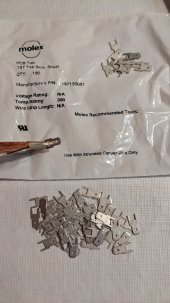You just calculated the cross-section of the sides of the box. The EVE battery boxes have bottoms and lids too, I assume they welded those too, giving two additional cross-sections of the length of the cell-stack.
First, it's not 6 mm rods, but 6 x M14 (14mm, I accidentally wrote M16) rods. Secondly, the threads cut into the cross-section area, thus you can't just calculate it as the cross-section of a cylinder. The M14 has a cross-section of 125mm², which is what I used in the calculation. Calculating it your way it would be 7*7*3.1416=153.9384, or an overestimation of 23% (153.9/125=1.23).
Maybe it renders differently for me, in the LF105 datashee it's at the bottom of p. 27 for me, just below the table. In the LF280K datasheet it's at the top of the page, to the left of the table.
The table might make it seem like that, but it's not just the text I quoted that make it seem like it should be read the other way. The test itself specifies a mm / s value, and it says compression force, not expansion force which they've used for the force generated by the cell itself.
Interestingly enough, if I run the chinese through google translate I get the exact english translations, word for word, that's used in the datasheet. With one exception, where google translates to "battery" it's changed in the datasheet to refer to "cell". I'm starting to wonder who they hired to do the translation..




